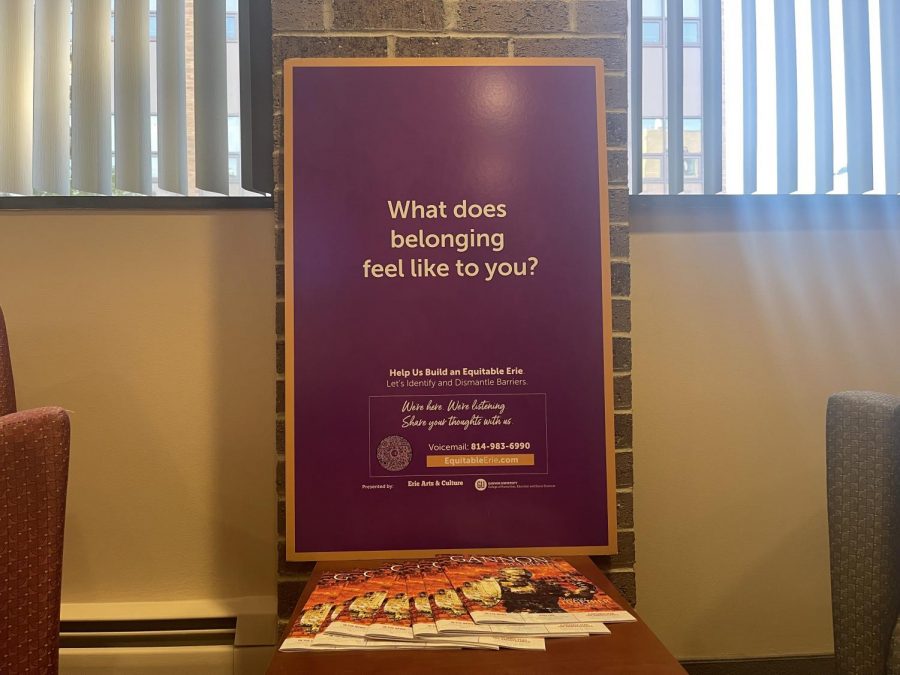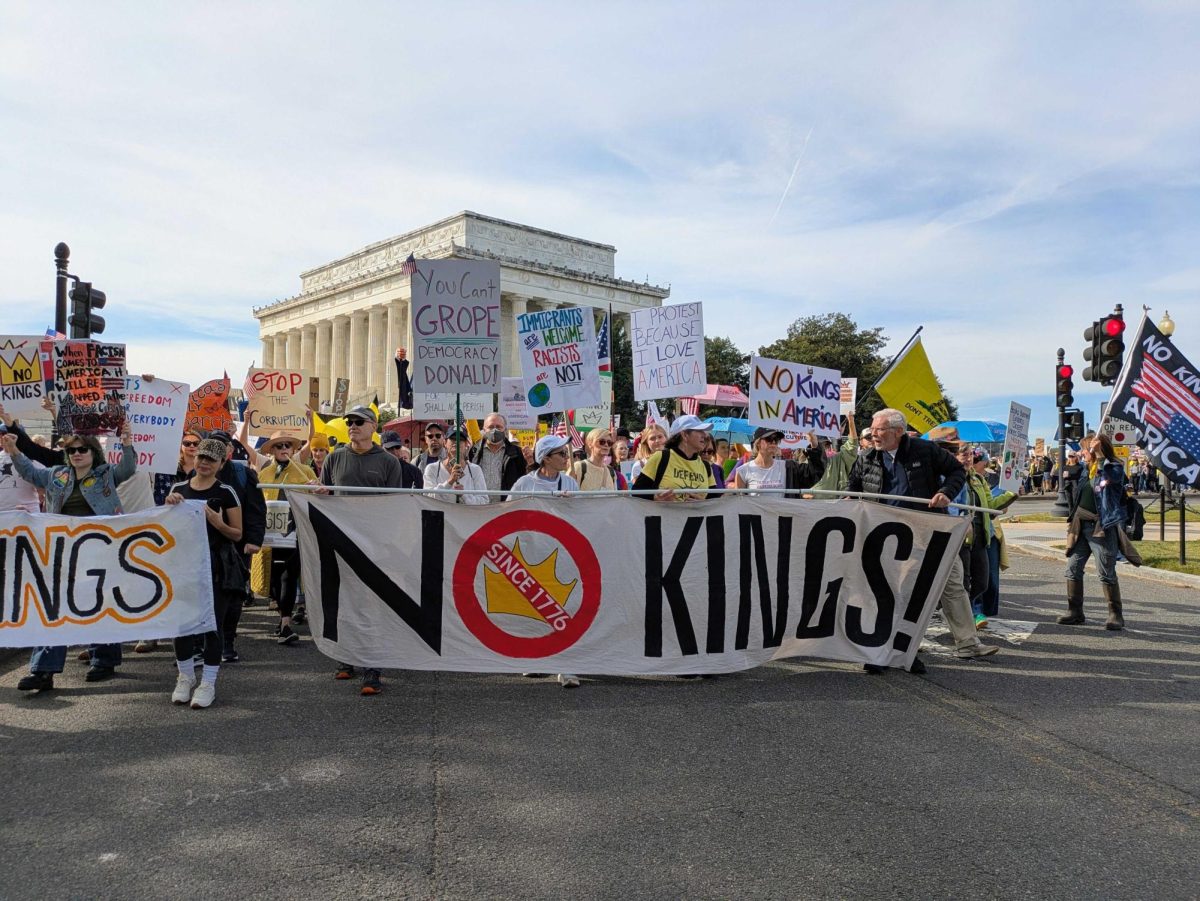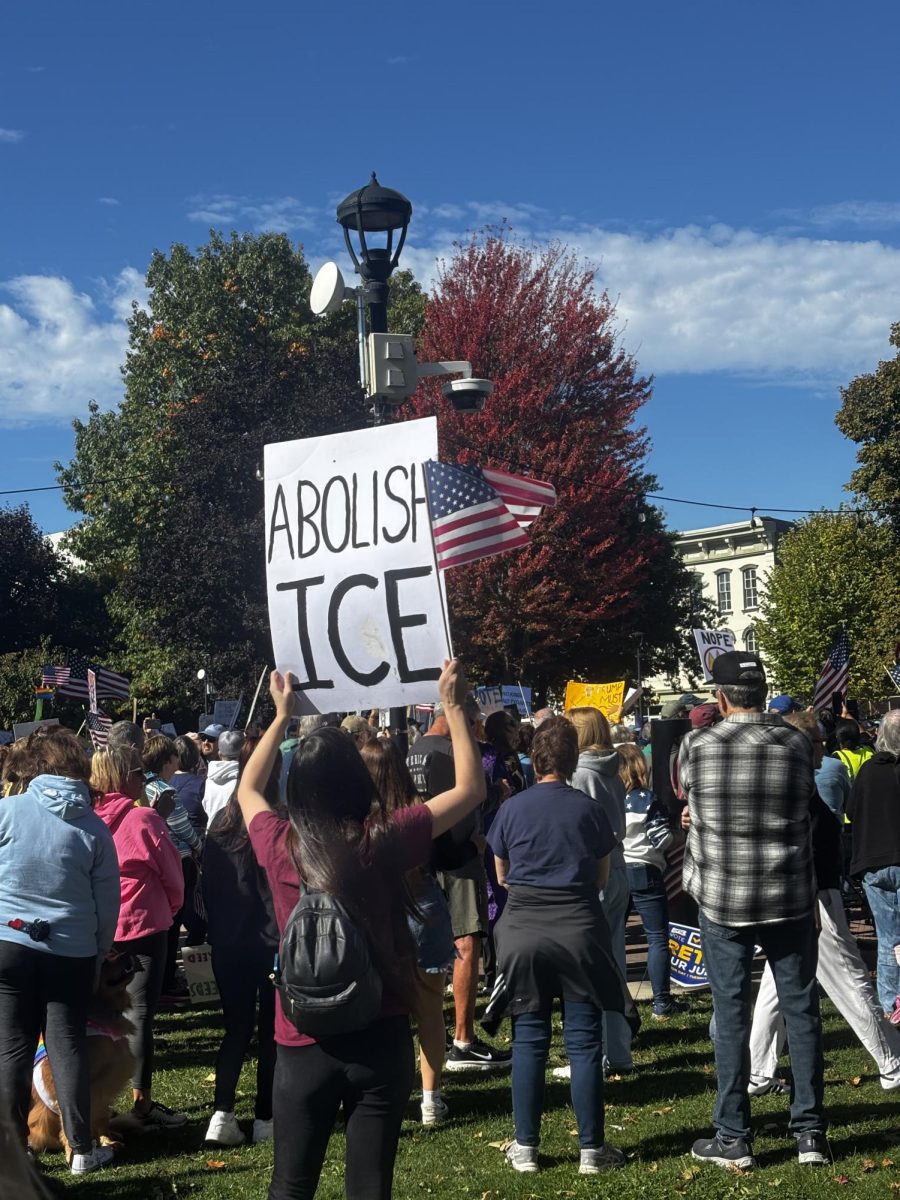Equitable Erie to partner with CHESS Speaker Series
Erie community art project attempts to spark discussion about systemic equity
August 31, 2021
Equity. Equality. Intersectionality. Oppression. These words are thrown around often, especially in today’s day and age. The “Equitable Erie” program, a co-sponsored community art project between Gannon University and Erie Arts and Culture, has set out to not only define what these words actually mean in the context of modern communities, but also to put plans in action to bring about systemic change.
The project involves art and signage throughout Gannon and the downtown Erie community. Guided walks of the Equitable Erie project will kick off early this month as part of the CHESS Speaker Series.
Equitable Erie defines equity as “the guarantee of fair treatment, access, opportunity and advancement while at the same time striving to identify and eliminate barriers that have prevented the full participation of some groups.”
While many associate equity with fairness, the two are not the same. Fairness promotes equality, and is only successful if all individuals start from the same places with the same privileges, while equity focuses on giving people what they need to live successful lives, even if this looks different for some than it does for others.
“Equity is making sure that everyone has the best possible environment and supports possible to achieve great things,” Leighann Forbes, Ph.D., associate dean of the College of Humanities, Education and Social Sciences at Gannon said. “The environmental needs and supports will differ from person to person, so equity isn’t just providing one thing.”
CHESS Dean Lori Lindley, Ph.D., said that it is important to Gannon as a university to work toward equity because of the diversity of student backgrounds.
“Students come to Gannon with widely differing levels of resources, support and academic preparation,” Lindley said. “At Gannon we are committed to creating an atmosphere where every student can succeed, and to providing what is necessary for that to be possible.”
One of the main parts of equity is equal accessibility. According to Megan Woller, Ph.D., director of Liberal Studies at Gannon, the Equitable Erie project came to fruition as a response to the question of accessibility to the arts in Erie.
“This question led to broader questions about perceived boundaries or barriers in our community,” Woller said. “In Erie, one of the things involved is looking at our institutions and examining access.”
Lindley said that Gannon is constantly evaluating at a systemic level in order to achieve equity for all students.
“Gannon has a responsibility to examine our structure, policies and practices to see if there are any changes we need to make in order to provide those equitable experiences and resources,” she said.
One of Equitable Erie’s goals is to, as a united group, identify and dismantle the barriers that exist in the Erie community. Equity requires examination of the community and its corresponding systems and asks the question of how individuals can contribute to systems that meet the needs of everyone.
A major contributor to these barriers is intersectionality, or the presence of multiple identity markers that influence one’s belief system and resulting actions. The term was first coined in 1989 by Kimberle Crenshaw, who emphasized the experience of Black women in America, and how misrepresented it was by the civil rights and feminist movements.
While intersectionality can put walls up, it can also bring them down when used as a framework for understanding why people understand the world the way they do.
“I believe we’re in the process of recognizing the importance of being responsive to intersectionality and developing supports for people,” Forbes said.
Forbes said that at Gannon, there is a constant effort to listen to the needs of students, faculty, staff and administration, and consequently design systems that meet them.
“Now, we are at a point where we will be identifying specific projects that will move the work of equity and thriving forward,” Forbes said.
Gannon’s position in the heart of Erie also allows for the practice of this on a citywide scale. The relationship between Gannon and the Equitable Erie project allows for Gannon to be involved directly with the work of social justice in Erie.
“As a member of the broader Erie community, we are seeking ways to be a responsible and respectful neighbor who can make a positive impact on the neighborhood for all residents,” Forbes said.
However, oppression still exists at Gannon and in Erie as a whole. The first step to fighting oppression is to recognize that each person has a unique lens through which they view society.
After discovering hidden biases, individuals can work to dismantle oppression through the intentional understanding of other human beings.
“Once we’ve made connections with each other, we can humanize ‘the other’ instead of demonizing them,” Forbes said. “Diversity provides us an opportunity to know others, but we must commit time to getting to know each other deeply and caring for each other as part of the Gannon family.”
Creating environments and spaces that are intercultural is one way to do this.
“Intercultural recognizes each culture as unique and part of a whole,” Forbes said.
Another way members of the Gannon community are furthering this work is through the Justice, Equity, Diversity and Inclusion Steering Committee.
“JEDI is a great step to fight oppression at both the systemic and micro levels.” Woller said. “Equity barriers need to be identified and dismantled in order to fight systemic oppression, and training and various forums that foster open, respectful discussion are important on the micro level.”
Another resource Gannon has to help all students thrive is the Health and Counseling Center.
“This year’s emphasis on wellness and mental health is prioritizing access to these resources for all students,” Lindley said.
Gannon’s Student Success Center is another example of this.
“It houses the Office of Disability Services, as well as federally funded TRIO programs such as the McNair’s Scholars program, designed to support and mentor students who are first-generation college students, from historically underrepresented groups or from low-income backgrounds,” Lindley said. “The GO College program in CHESS, whose grant has just been renewed for another five years, provides this type of outreach in the Erie public schools.”
Equitable Erie said that systemic equity is complex, and should be designed to further social justice. The project defines it as “a dynamic process that reinforces and replicates equitable ideas, power, resources, strategies, conditions, habits and outcomes.”
According to Forbes, because of Gannon’s strong Catholic tradition and adherence to Catholic Social Teaching, the university is making strides to work toward systemic equity. Equity is a major component of many of the themes of Catholic Social Teaching, and calls for solidarity
within this context. Forbes hopes that the Equitable Erie project will cause people to join together not only in the difficult times, but in the good times as well.
“As members of the Gannon community and the broader Erie community, we are called to be in community with each other and stand side by side, regardless of our differences,” Forbes said. “By making this public art project available to our whole community, we are encouraging positive interactions and communication with the desired outcome of understanding one another more fully.”
Woller also said that understanding the diverse backgrounds of others helps bring people together and adds richness and excitement to life.
“Through global learning, in classrooms and in so many other areas of the university, Gannon’s community promotes diversity and inclusion in powerful ways,” Woller said.
In the context of the CHESS Speaker Series as a whole, the Equitable Erie project begins this year’s program and bridges the gap between last year’s theme (Racial Justice: Be the Change) and this year’s theme (Reinventing Right Now).
“In recent years, the CHESS Speaker Series has presented many opportunities to think about these issues from multiple perspectives, from talks and panel discussions with international speakers to the Equitable Erie project,” Woller said.
ANNA MALESIWSKI





